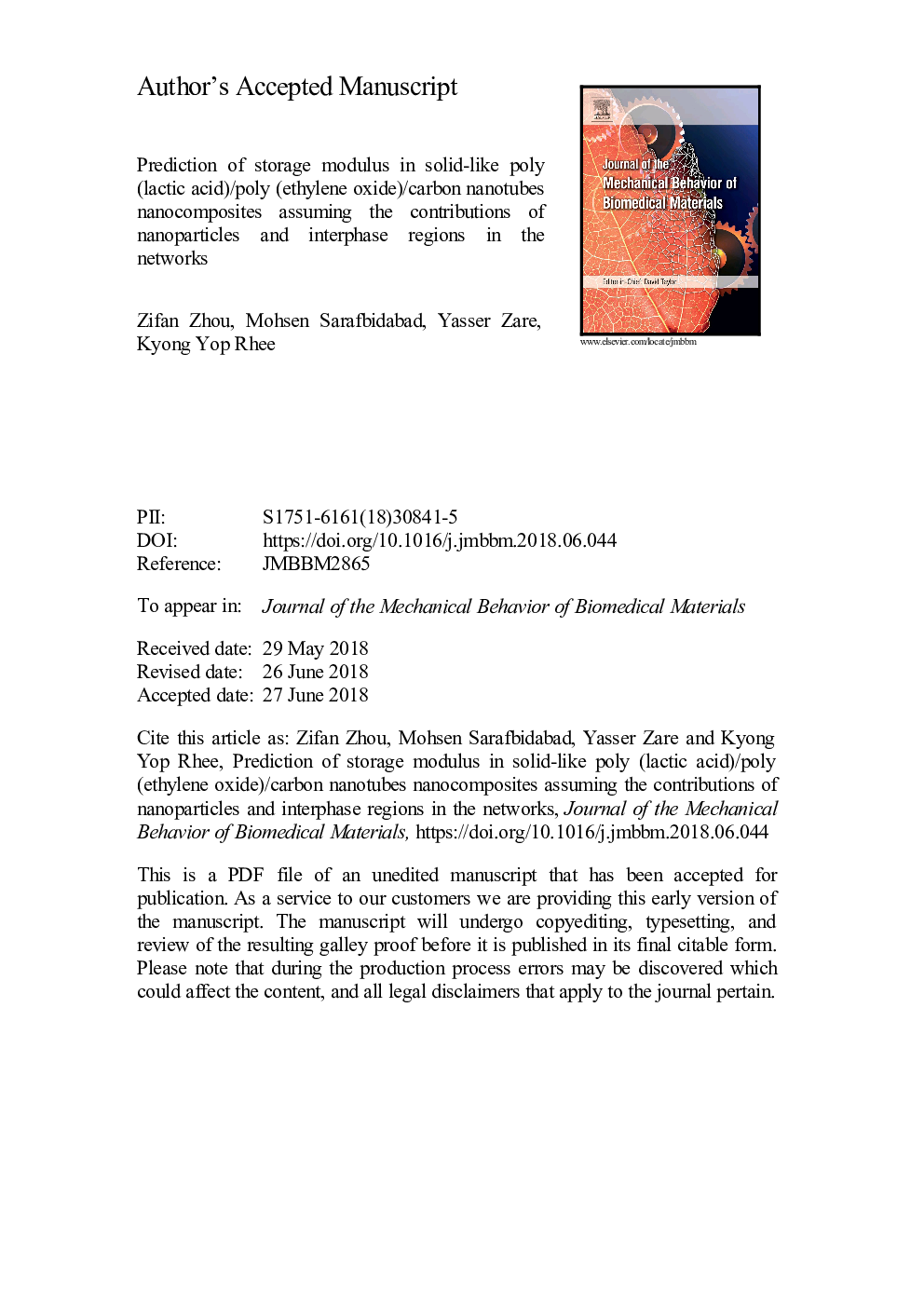| Article ID | Journal | Published Year | Pages | File Type |
|---|---|---|---|---|
| 7206931 | Journal of the Mechanical Behavior of Biomedical Materials | 2018 | 25 Pages |
Abstract
In this paper, Kolarik model for tensile modulus of co-continuous blends is developed to predict the storage modulus of poly (lactic acid) (PLA)/poly (ethylene oxide) (PEO)/carbon nanotubes (CNT) nanocomposites at low frequencies (solid-like region). The storage moduli of prepared samples are obtained by frequency sweep test and Kolarik model is expanded assuming the characteristics of interphase regions and CNT networks. The developed model takes into account the percolation threshold, the percentage of networked CNT and the volume fraction of interphase regions in the networks. The calculations of developed model are compared to the experimental data and the significances of main parameters on the storage modulus are justified. The calculations successfully agree with the experimental data at different PLA and CNT concentrations. The addition of CNT thickens and strengthens the interphase regions in the samples, but the different concentrations of PLA differently affect the properties of interphase regions. A thick and strong interphase enhances the storage modulus of nanocomposites. The high fraction of networked CNT and the significant modulus of nanoparticles considerably promote the storage modulus, but only small networks cause poor storage modulus for nanocomposites.
Related Topics
Physical Sciences and Engineering
Engineering
Biomedical Engineering
Authors
Zifan Zhou, Mohsen Sarafbidabad, Yasser Zare, Kyong Yop Rhee,
